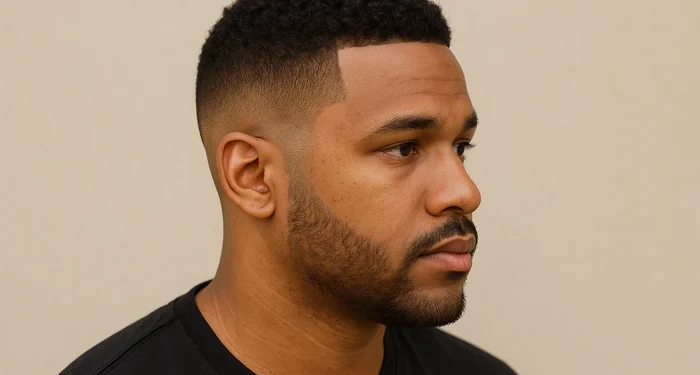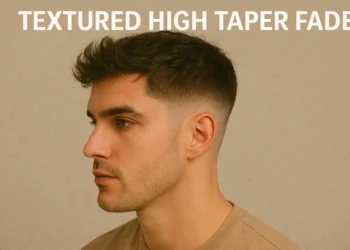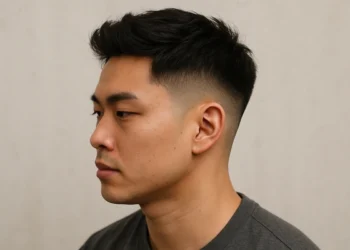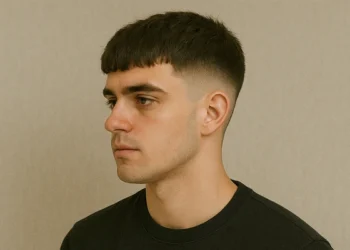In this article, we’ll explore the unique phrase “fade taper dwindle” from multiple angles—hairstyling, language use, and its real-world meanings. Whether you’ve heard this phrase in fashion, barbershops, or even in everyday conversation, this blog post breaks down what each part means. We’ll also explain how styles like the slide taper fade dwindle and low fade taper dwindle are popular among modern haircuts, especially for those with curly hair. By the end, you’ll understand how the words “fade,” “taper,” and “dwindle” connect not just in barbershop lingo but also in everyday English. This post uses real meanings—not opinions—and answers common questions such as “What does dwindled away mean?” or “What is another word for dwindle or taper?” in simple language.
What Does “Fade Taper Dwindle” Mean?
At first glance, the phrase fade taper dwindle may seem confusing. It blends barbering terminology with English vocabulary that we often hear in a completely different context. Let’s break it down step by step.
- Fade: In hairstyling, a fade is when the hair gradually gets shorter as it goes down the sides and back of the head. It blends the longer hair on top with very short or even skin-level hair near the neck.
- Taper: A taper is slightly different. It also involves gradually shortening the hair, but usually more subtly—often limited to the neckline and sideburns.
- Dwindle: This word comes from everyday English. It means to decrease slowly or shrink in size or strength. For example, “His energy dwindled after a long day.”
So, when combined—fade taper dwindle—this phrase suggests a layered concept of gradually reducing something, whether it’s hair length, strength, or presence.
Slide Taper Fade Dwindle: A Style That’s Growing in Popularity
Among the popular haircut variations is the slide taper fade dwindle. This is a term often used to describe a technique where the fade transitions are ultra-smooth, almost like the hair slides from longer to shorter lengths. The word “dwindle” here connects the smooth tapering action, as if the hair is gently fading away.
Key Features of Slide Taper Fade Dwindle:
- Starts higher on the head but transitions gradually.
- Maintains volume on top.
- Looks natural and sleek.
- Works well for both straight and curly hair.
This style is especially suitable for people who want a clean but not too dramatic haircut. It’s a fade with finesse, showing off the barber’s skill in blending.
Low Fade Taper Dwindle: Subtle but Stylish
If you prefer a less aggressive haircut, the low fade taper dwindle might be your best choice. Unlike a high fade that starts near the temples, a low fade begins closer to the ears and moves down the nape of the neck.
Why do people call it a “dwindle” style? Because the cut becomes less and less noticeable as it goes downward. It feels like the hair “dwindles away” into the skin.
Benefits of Low Fade Taper Dwindle:
- Perfect for office and professional settings.
- Easy to maintain and grow out.
- Enhances facial features without drawing too much attention.
This style proves that dwindle isn’t just a word from a dictionary—it has a visual meaning when applied to hair.
Fade Taper Dwindle on Curly Hair: A Clean Look with Texture
Curly-haired individuals often find it tricky to balance volume and neatness. The fade taper dwindle curly hair cut solves this issue. It keeps curls intact on top while gradually reducing bulk on the sides.
Why It Works:
- Reduces puffiness on the sides.
- Highlights the natural curl pattern.
- Keeps the haircut breathable and cool.
When applied to curly hair, the “dwindle” action helps manage thickness without losing texture. It’s both stylish and functional.
The Phrase “Fade Taper Dwindle” in the Real World: Not Just About Hair
Interestingly, the phrase fade taper dwindle has popped up beyond barbershops. One reference is from The New York Times, where phrases like fade dwindle taper nyt appear in political or economic contexts. For example:
- A politician’s support may fade, taper, and dwindle over time.
- A company’s profits might show a similar decline pattern.
This real-life usage strengthens the concept behind the words. Whether it’s hair, energy, influence, or quantity—fade taper dwindle describes a graceful or gradual decline.
What Is Another Word for Dwindle or Taper?
Many people ask: What is another word for dwindle or taper? Here’s a quick reference:
- Dwindle synonyms: shrink, decrease, reduce, lessen, fade away, wane.
- Taper synonyms: narrow, diminish, decrease gradually, reduce.
In haircuts, “taper” and “fade” can be used to describe similar styling techniques. But in language, they often imply a gradual reduction of something—just like when the sunlight begins to fade or when noise dwindles at night.
What Does “Dwindled Away” Mean?
The phrase dwindled away is used when something slowly disappears or becomes less over time. Examples include:
- “Her energy dwindled away after the marathon.”
- “The crowd dwindled away as the concert ended.”
In the context of hairstyles, it means that the hair length slowly disappears or blends into the skin—again, like a fade or taper. This is why the word “dwindle” is so visually effective in describing modern grooming trends.
Why Understanding the Phrase Helps
The combination of “fade,” “taper,” and “dwindle” reflects not only a haircut technique but also a way of describing gradual transformation—whether it’s a style, mood, or phase in life. This kind of phrasing is popular among:
- Barbers: for explaining haircuts clearly.
- Writers and journalists: for expressing layered transitions.
- Clients and readers: for understanding the tone and structure of change.
Read Also: Classic Taper Fade Haircut
Final Thoughts
The phrase fade taper dwindle beautifully captures a concept of controlled reduction, whether in hairstyling or general language. It has real applications in daily life, particularly in barbershops where styling terms evolve with culture. From the slide taper fade dwindle to the fade taper dwindle curly hair style, these terms are grounded in reality and practical use—not just trendy buzzwords.
This blend of grooming technique and linguistic clarity makes fade taper dwindle a fascinating phrase. Understanding its meaning can improve your style vocabulary and even your everyday communication.
FAQs
Q1: What is fade taper dwindle?
It’s a phrase combining three styling and language concepts: fade (a haircut), taper (gradual shortening), and dwindle (to shrink or decrease). Together, they describe a haircut that gets progressively shorter or a situation that gradually lessens.
Q2: Is fade taper dwindle a real haircut?
Yes, it’s often used to describe detailed fades like the slide taper fade dwindle or low fade taper dwindle, especially when the hair transition is extremely smooth.
Q3: Can fade taper dwindle be used on curly hair?
Absolutely. The fade taper dwindle curly hair variation is popular because it manages volume while keeping curls defined on top.
Q4: What does “dwindled away” mean?
It means something gradually reduced or faded until it was gone, like energy, sound, or even hair length in a taper cut.
Q5: What’s another word for taper or dwindle?
Similar words include decrease, fade, reduce, narrow, shrink, or lessen.











